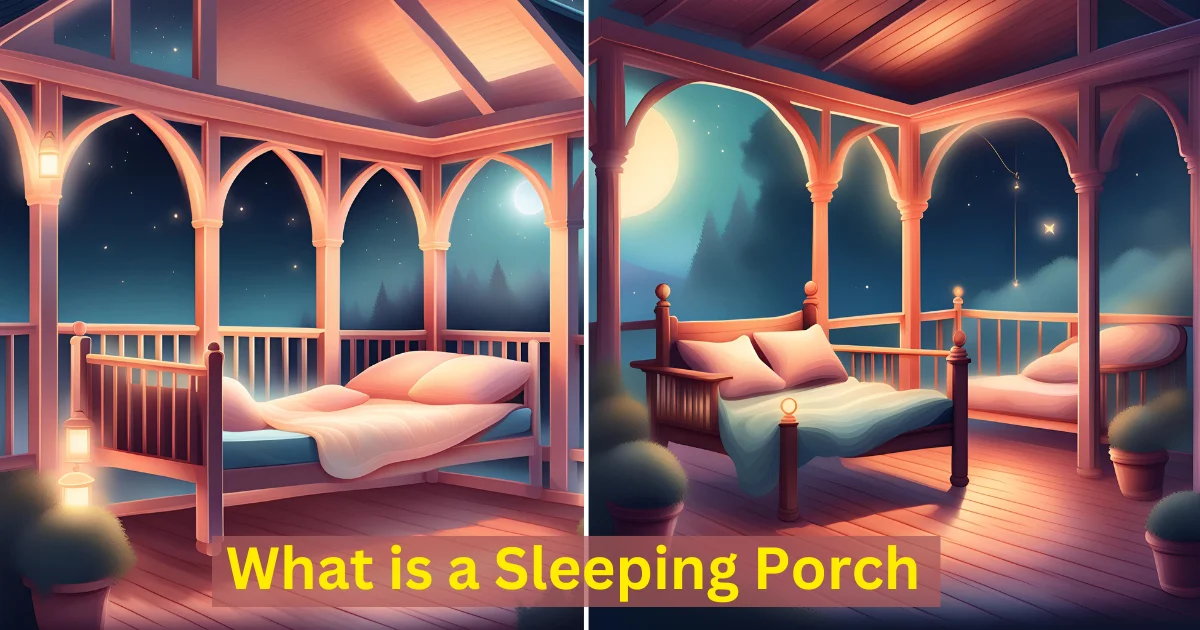The concept of the sleeping porch, an outdoor space designed for sleeping, has a rich history dating back to ancient civilizations. Over the years, it has evolved in response to changing lifestyles, architecture, and technology. This essay, with a focus on the Western context, aims to provide a comprehensive exploration of the sleeping porch. We will delve into its historical origins, its evolution, design principles, cultural significance, and its relevance in the modern world. In this article we cover the topic “what is a sleeping porch“.
Read More: Sleep Abuse
Historical Origins of what is a sleeping porch
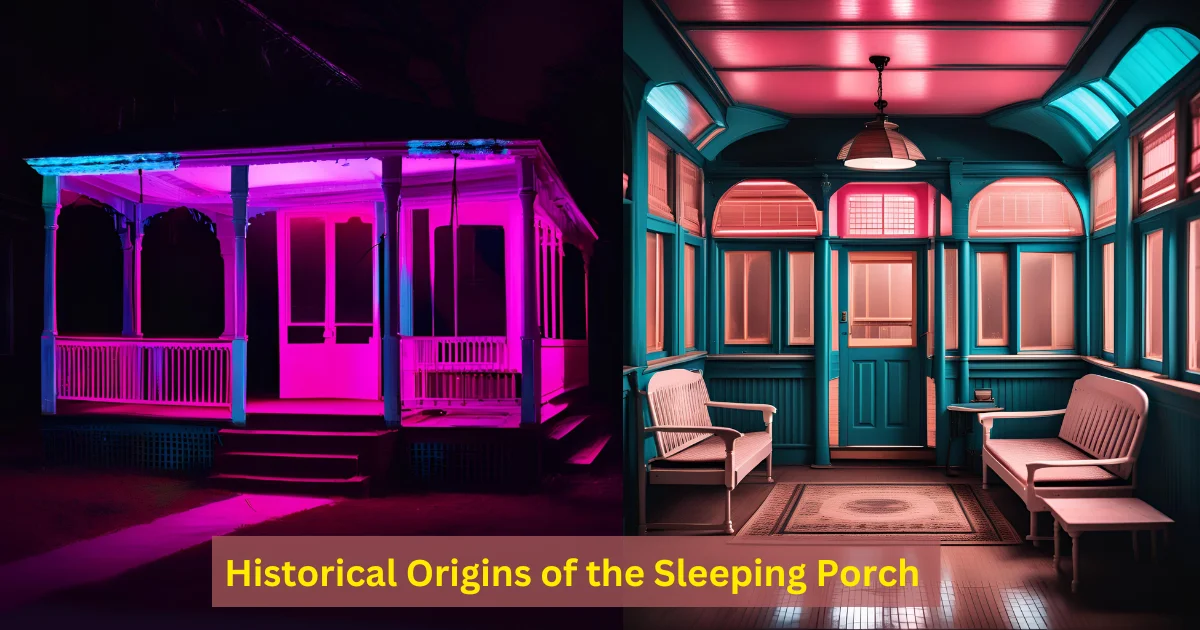
The origins of the sleeping porch can be traced back to ancient civilizations, where people sought ways to escape the heat and humidity during the night. In ancient Rome and Greece, for example, outdoor sleeping areas, often elevated or shaded, were common features in architectural designs. These spaces allowed residents to sleep comfortably, especially during hot summer nights. Similar concepts can be found in other cultures worldwide, from the Middle East to Asia.
However, it was in the late 19th century that the sleeping porch gained prominence in Western architecture. The Industrial Revolution brought significant changes to urban living conditions, and the need for improved ventilation and healthful living spaces became evident. Architects and designers began experimenting with the concept of open-air sleeping areas in response to these needs.
Evolution of the Sleeping Porch
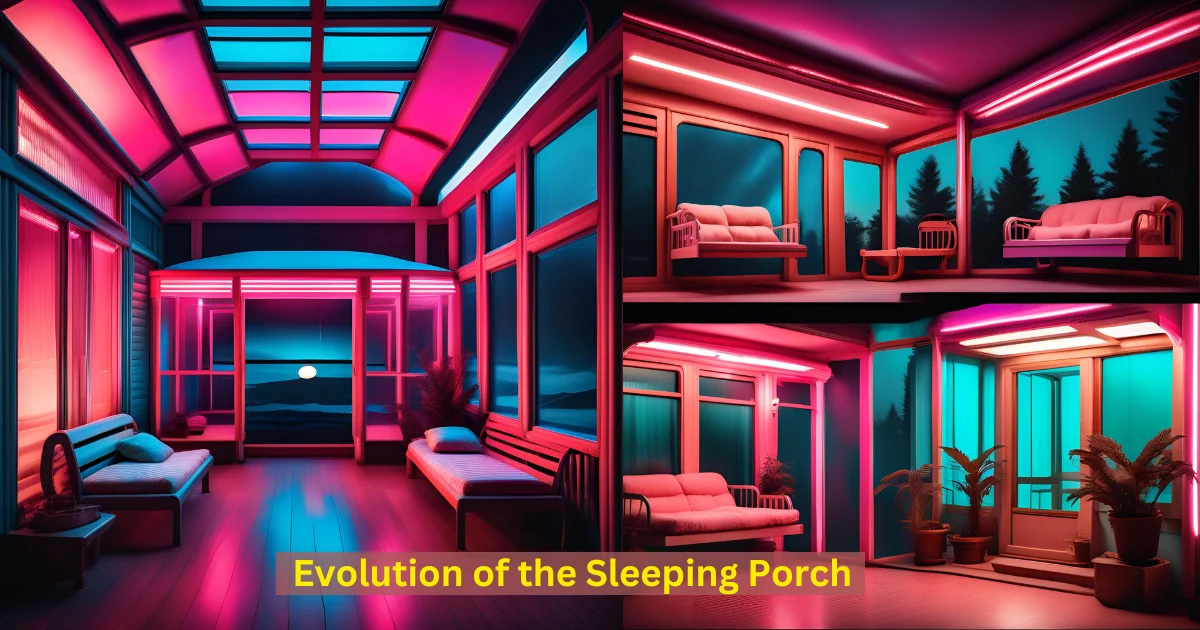
Late 19th Century to Early 20th Century: The late 19th century saw the emergence of the sleeping porch as a distinctive architectural feature in Western homes. These early sleeping porches were often located on the upper floors of houses and incorporated elements like louvered windows and curtains to control airflow. The primary purpose was to provide relief from the summer heat and improve air quality.
Health and Wellness: The early 20th century witnessed a growing interest in health and wellness, leading to the popularity of sleeping porches. Medical professionals advocated for fresh air and sunlight as essential elements for good health, and sleeping outdoors became associated with well-being. As a result, sleeping porches were designed with a focus on maximizing exposure to these natural elements.
Architectural Styles: The architectural styles of the time influenced the design of sleeping porches. For instance, the Craftsman style, with its emphasis on natural materials and blending of indoor and outdoor spaces, often featured prominent sleeping porches. Likewise, the Prairie style, characterized by horizontal lines and flat roofs, lent itself well to the incorporation of sleeping porches.
Decline and Resurgence: The popularity of the sleeping porch declined in the mid-20th century due to the widespread adoption of air conditioning. Many homes were retrofitted with central air systems, reducing the need for open-air sleeping areas. However, in recent decades, there has been a resurgence of interest in sustainable and energy-efficient architectural design. This has led to a renewed appreciation for the benefits of sleeping porches.
Design Principles of the Sleeping Porch
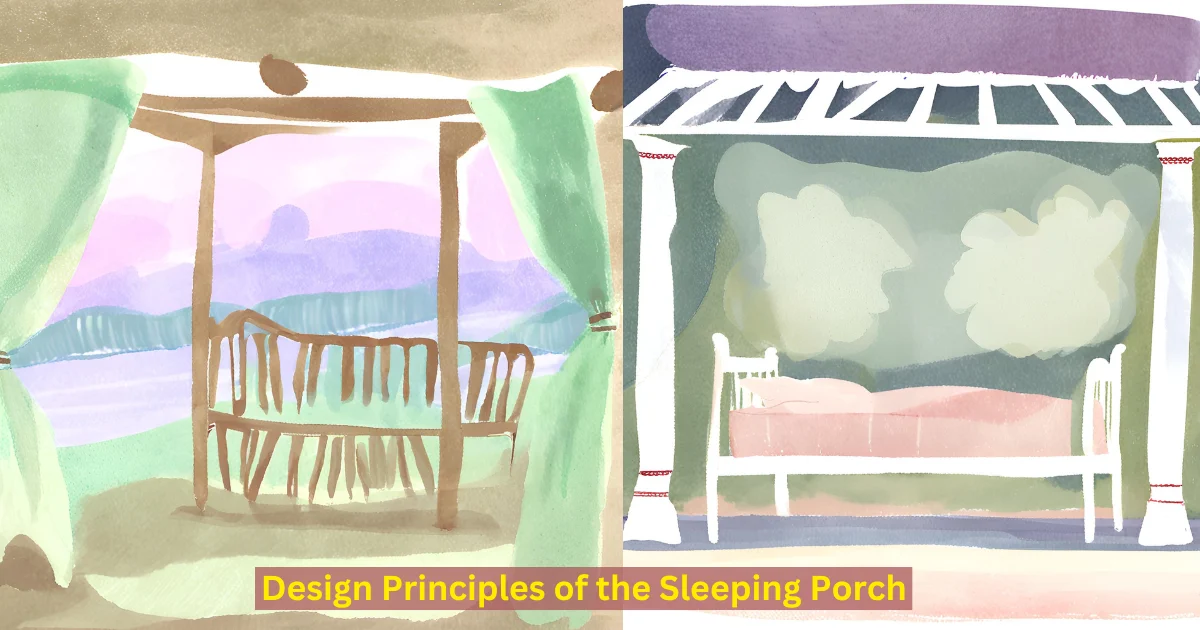
The design of a sleeping porch involves a careful consideration of various elements to create a comfortable and inviting space for rest and relaxation. Some key design principles include:
Orientation and Location: The location of a sleeping porch within a house is crucial. It should take advantage of prevailing winds and natural shade to maximize comfort. Additionally, it should provide a level of privacy while still allowing for a connection to the outdoors.
Ventilation: Adequate ventilation is essential for a sleeping porch. This can be achieved through the use of louvered windows, ceiling fans, or operable skylights. Cross-ventilation is particularly effective in promoting air circulation.
Protection from Insects: In regions where insects are a concern, sleeping porches may need screens or other protective measures. This allows residents to enjoy the outdoor experience without the nuisance of bugs.
Comfortable Furnishings: The choice of furnishings should prioritize comfort. Weather-resistant materials and fabrics are advisable, as sleeping porches are exposed to the elements.
Lighting: Consideration should be given to both natural and artificial lighting. During the day, the sleeping porch should be well-lit with natural sunlight, while at night, adjustable lighting can create a cozy ambiance.
Privacy: Depending on its location and intended use, privacy can be a significant concern. Trellises, plants, or curtains can be used to define the space and create a sense of seclusion.
Access: Easy access to the sleeping porch from the interior of the house is essential. Sliding or French doors are common choices for this purpose.
Cultural Significance of the Sleeping Porch
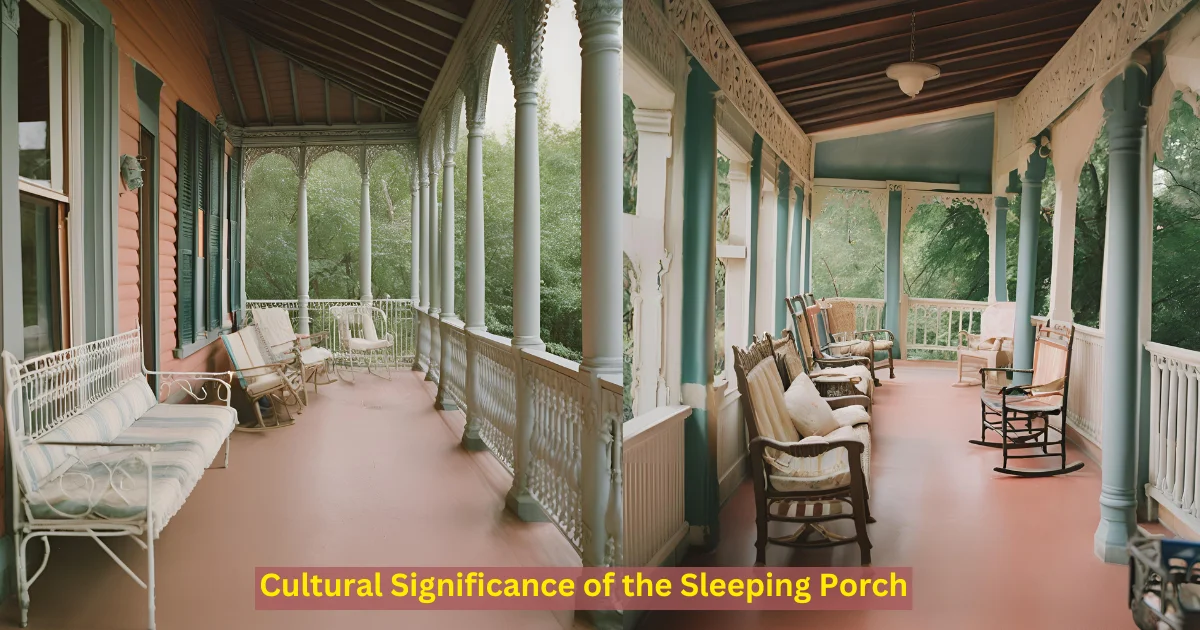
The sleeping porch has played a significant role in the cultural and social aspects of Western living. It represents more than just an architectural feature; it embodies a lifestyle and a connection to nature. Here are some of the cultural aspects associated with sleeping porches:
Relaxation and Escapism: Sleeping porches have traditionally been spaces for relaxation and escapism. They offer a retreat from the hustle and bustle of daily life, providing a tranquil environment for reflection and rest.
Family and Social Gatherings: In some families, sleeping porches have served as spaces for family gatherings, storytelling, or stargazing. It’s a place where generations can come together and bond.
Literary and Cinematic Representation: Sleeping porches have been featured in literature and film as settings for romantic encounters, contemplative moments, and scenes of profound emotional impact. They often symbolize a connection to the past or an escape from the constraints of modern life.
Architectural Heritage: The presence of sleeping porches in historical homes contributes to the preservation of architectural heritage. They serve as reminders of the evolving tastes and lifestyles of past generations.
Relevance of the Sleeping Porch in the Modern World
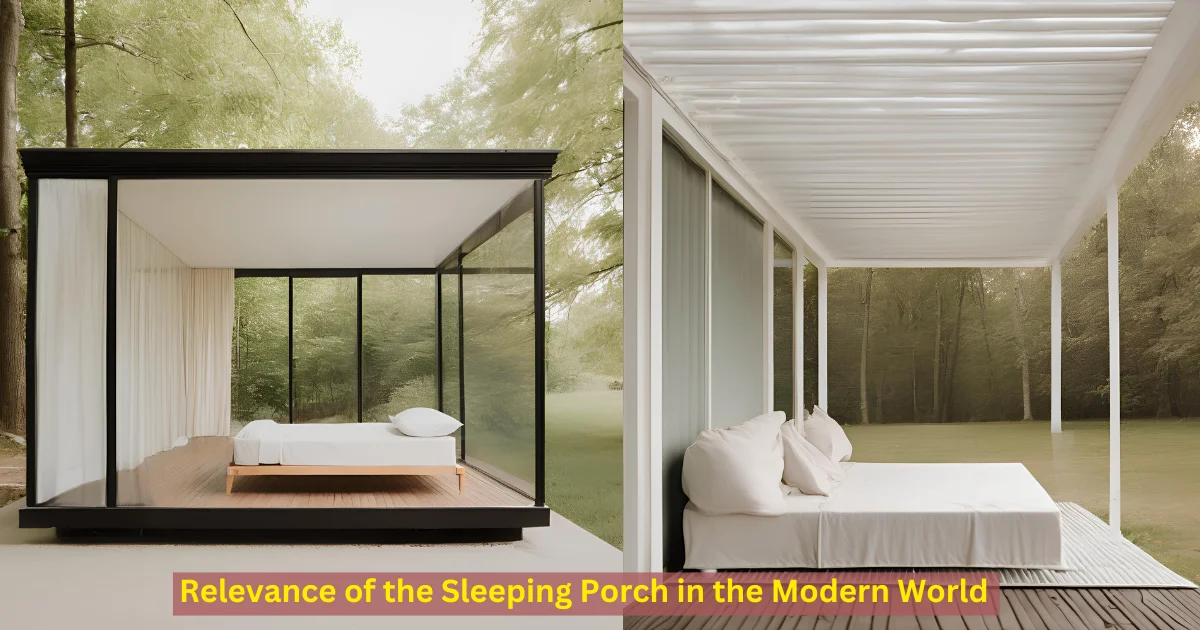
In the modern world, the sleeping porch is experiencing a resurgence in popularity, driven by several factors:
Sustainability: As society becomes more conscious of environmental sustainability, the sleeping porch aligns with the principles of passive cooling and energy efficiency. It reduces the reliance on artificial cooling systems, thus lowering energy consumption.
Wellness: The emphasis on wellness and holistic health has led individuals to seek out spaces that promote physical and mental well-being. Sleeping porches provide a natural connection to the outdoors, fresh air, and the therapeutic benefits of nature.
Urban Living: In densely populated urban areas, outdoor space is a premium. A well-designed sleeping porch can serve as a private oasis, allowing city dwellers to escape the noise and congestion of urban life.
Architectural Expression: Architects and designers continue to explore innovative ways to integrate the outdoors into modern living spaces. Sleeping porches offer opportunities for creative design and architectural expression.
Adaptability: The concept of the sleeping porch is adaptable to various housing types, from single-family homes to multi-unit residential buildings. It can be incorporated into both new construction and renovation projects.
The sleeping porch, with its historical roots and enduring appeal, continues to captivate architects, designers, and homeowners alike. Its evolution over the centuries reflects changing societal needs and architectural trends. As a cultural symbol, it represents relaxation, connection to nature, and a sense of nostalgia. In the modern world, it is finding renewed relevance in sustainable architecture, wellness-focused design, and urban living.
Whether it’s a century-old Craftsman home with a classic sleeping porch or a contemporary eco-friendly residence with a modern twist on the concept, the sleeping porch remains a testament to the enduring appeal of open-air living and the enduring desire for a restful night’s sleep under the stars. As the world continues to evolve, the sleeping porch stands as a reminder that some architectural features are timeless, offering us a glimpse into the past while pointing the way to a more sustainable and holistic future.

